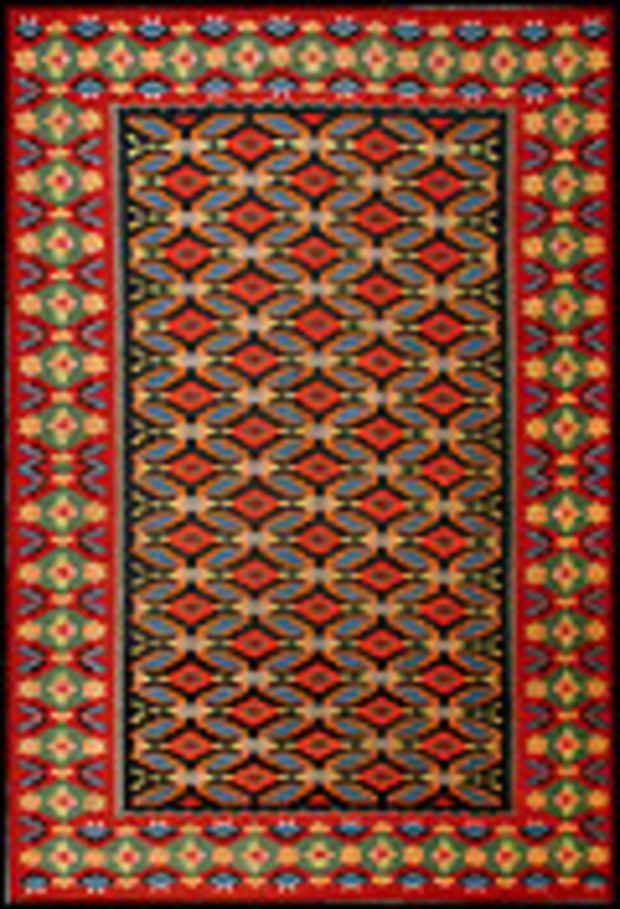"Ukrainian Kilims: Journey of a Heritage" Exhibition
The Ukrainian Museum

This event has ended.
Ukrainian Kilims: Journey of a Heritage, an exhibition of selected kilims from The Ukrainian Museum's permanent collection, will open to the public on February 12, 2012. More than 30 prized examples from the collection, the oldest kilim dating back to the late 18th century and others from the early 20th century, reveal the range and richness of colors and motifs used in the weaving of kilims. The exhibition will remain on display until October 21.
"Kilim weaving has been practiced by Ukrainians for more than a thousand years," said Lubow Wolynetz, the Museum's curator of folk arts. "Some of the kilims that are on display had survived war and the destructive Soviet occupation of Ukraine. They were transported across borders by Ukrainian refugees determined to preserve their cultural legacy. Left in our care after the arduous journey from Ukraine to this country, we are proud to present them as part of our growing collection of traditional textiles."
The flat tapestry rugs, woven on vertical or horizontal looms to produce stylized floral ornamentation or geometric patterns respectively, are made with naturally dyed wool, which yields rich, soft hues and adds to the beauty and warmth of the traditional Ukrainian kilim.
Spinning and weaving tools dating back to the Trypillian age (ca. 5000-2000 BC) have been found on the territory of today's right-bank Ukraine. The earliest known account documenting Ukrainian kilim weaving is a 10th century chronicle by the Arabian traveler, Ahmed Ibn Faldan, who wrote about a funeral kilim and the woman responsible for its production. References in other chronicles describing both the ritualistic and everyday usage of kilims by the princes of Kyivan Rus continue into the 12th century. By the 15th century, the importance of the kilim was indisputable, as detailed descriptions of kilims identified among the property holdings of Ukrainian aristocrats often included color, ornamentation, quality, size, and values, as well as their uses – as wall decor, table or bench covers, floor covering, and as important components of brides' dowry chests.
Stimulated by Western European demand, kilim production in Ukraine boomed from the 16th to the 18th centuries. Weaving guilds were formed. Workshops staffed by serf labor supplied private estates and manufactured kilims for the trade. Even monasteries took part in kilim production. Once an object coveted by the nobility, by the 19th century the kilim became a universal ornamental item in the average home. Kilims were being routinely produced on looms in Ukrainian villages as adornment for home interiors, highly-prized dowry chest items, and essential funeral textiles. By the end of the 19th century, however, the abolition of serfdom and rise of industrialization led to a significant decline in Ukraine's kilim industry, the socioeconomic effects negatively impacting village kilim weaving as well.
Around the turn of the 20th century, Ukrainian scholars and art lovers started developing an interest in folk art. Workshops reappeared and folk art schools were established. Students of weaving learned the art by copying antique kilims in private collections and museums, many of which have been since destroyed, thus preserving the designs and techniques. Artists such as Mykola Butovych, Sviatoslav Hordynskyi, Robert Lisovsky, Petro Cholodny, Jr., and Olena Kulchytska built reputations as kilim designers in the 20th century, and created several of the designs for original pieces that are included in this exhibition.
Media
Schedule
from February 12, 2012 to October 21, 2012